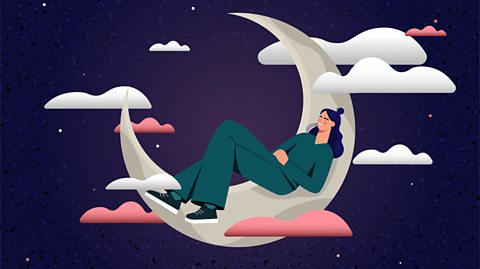Zzzzzzzzzzzzz.
Sleeping. Itâs a large part of our lives and an essential function that enables our bodies and minds to recharge. While this universal human experience may seem like a biological constant, research shows that our sleeping patterns havenât always been the same.
±«Óătv Bitesize takes a look at the evolution of sleeping from across the centuries.

Sleepy beginnings
The first documented observations of sleeping began to emerge in approximately 450BC. It was during this time that Alcmaeon, an ancient Greek physician, suggested that sleep may be a period of unconsciousness brought on by a lack of blood circulating from the heart to the brain.
Six centuries later, fellow physician and philosopher, Galen, advanced the scientific thought around sleeping even further, when he theorised that it was the brain, rather than the heart, that produced consciousness.
Our understanding of what happens while we sleep has advanced, but other contemporary discoveries have also suggested that sleep has gone through a large evolutionary shift over the years.
In 2001, the historian Roger Ekrich published a seminar paper on human sleep. He found that rather than sleep taking place in the form of one long, uninterrupted stretch, known as monophasic sleep, our ancestors divided the night into two halves by having a first and second sleep.
This is called biphasic sleeping and it may be much more common than you think.
Have we had it all wrong?
In the 8th-Century BC epic poem, the Odyssey, ±«Óătvr refers to the âfirst sleepâ, in what is one of the earliest reference to segmented sleep. Other references have since been found from across the 15th, 16th and 17th Centuries in literature, diaries, court records and anthological reports.
So what did biphasic sleep look like?
An average night sleep in 17th-Century England is thought to have started with people going to bed between 9pm and 11pm. A few hours later they would wake up from their first slumber for between one to two hours, before going back for their second sleep, which would last until the morning.
During night time waking hours, evidence shows that people engaged in a variety of pastimes, whether that meant staying in bed to read or going out and visiting a neighbour.
For some it was also a time for prayer, with many prayer manuals from the late 15th-Century citing special prayers for the hours in between first and second sleeps.
But this kind of sleep wasnât just reserved for pre-industrial England. There is evidence that it has been practised across Europe, Africa, South East Asia, Australia and the Middle East to name a few.

Rise and shine!
By the early 19th Century the two-sleep system was practically abandoned. Some academics credit this transition from segmented to consolidated sleep to the invention of artificial light.
When Thomas Edison invented the incandescent light bulb in 1879, it saw wide spread adoption that changed the way we sleep forever. This is because it allowed people to stay up, work or socialise through the night in a way that wasn't possible under the dim glow of moonlight or with the use of oil lamps.
Today, there is more emphasis on monophasic sleep, the sleep pattern that contemporary society would refer to as ânormalâ. Official NHS guidance states that on average adults need between seven and nine hours sleep; children on the other hand, need between nine and 13 hours.
While monophasic sleep is still a relatively recent phenomena, biphasic sleeping patterns havenât completely gone away. The Spanish word âsiestaâ, for example, describes a nap taken in the hottest hours of the day â a tradition that can be found in different countries all over the world.
Another example is a 1992 sleep experiment led by the psychiatrist and scientist Thomas Wehr. The study saw a group of volunteers placed in an environment which was dark for 14 hours each day over the period of a month.
On the experimentâs fourth week, it was found that Wehrâs subjects slept for an average of eight hours a night, however these took place in two separate cycles. This research concludes that humans have a natural inclination towards a biphasic sleep pattern.
So, if you ever find yourself up in the middle of the night, remember your sleeping patterns might be a lot closer to your ancestors' than you think!
This article was published in January 2023
The curious evolution of smiling
From Greek statues, to Renaissance portraits to the selfie. How have our smiles changed with time?

The stories behind todayâs routine medical procedures
Anaesthetics, blood transfusions, cardiac surgery - they all started somewhere.

From flying frogs to the purrr-fect cuppa: Unusual research studies that will blow your mind
±«Óătv Bitesize takes a look at some curious Ig Nobel Prize winning research studies.
